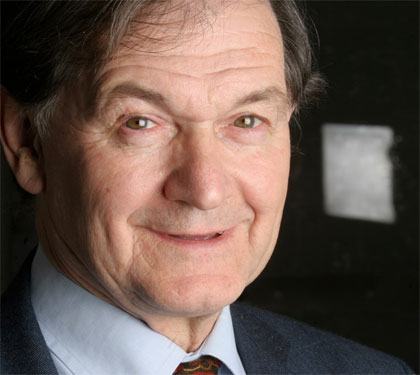
Singularity Theorems
Image: Roger Penrose, whose work in the '60s propelled Einstein’s theory of General Relativity back into the mainstream of physics
Source: Wikipedia commons
Singularities within the theory of general relativity are points of space-time at which physical quantities such as curvature or energy density diverge. The presence of a singularity in Einstein's equations was noted by Lemaitre in the 1930's, finding that a homogeneous, isotropic universe had infinite curvature at its origin in time. However, many argued that the theoretical singularities were just artifacts of the symmetries used, and that they would disappear in general solutions.
The issue was solved in 1965-66 when Roger Penrose and Stephen Hawking proved that singularities existed in all solutions to Einstein's equations with some natural, generic features. Most cosmologists believe that singularities are not physical objects themselves, but rather point to places where general relativity does not model reality and thus are prime candidates for investigations into quantum gravity.
Links
Universe Today: Matt Williams >
Wikipedia: Penrose-Hawking singularity theorms >
Multimedia
Stephen Hawking CERN lecture: The creation of the universe >

